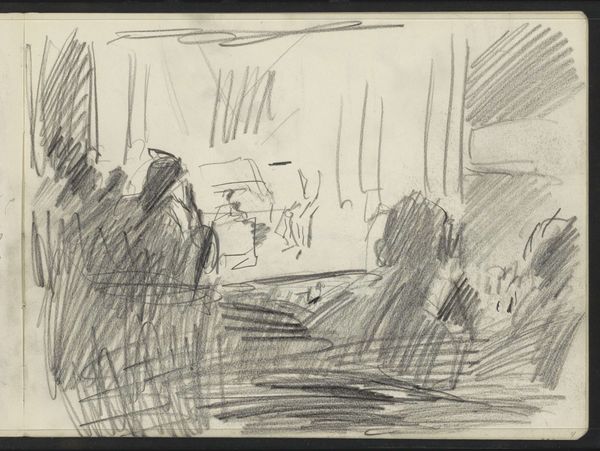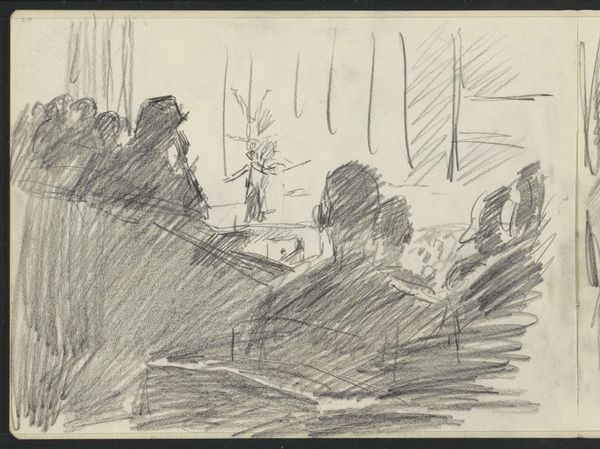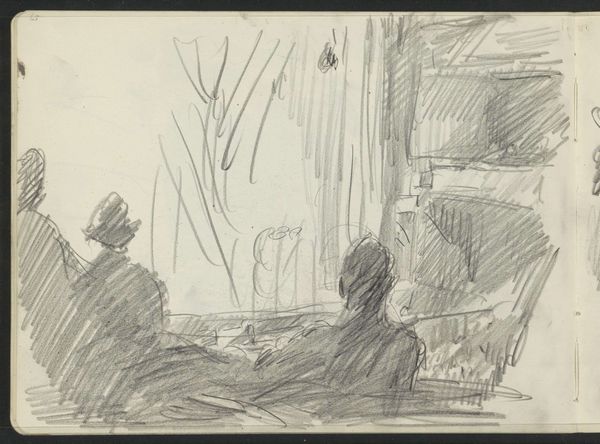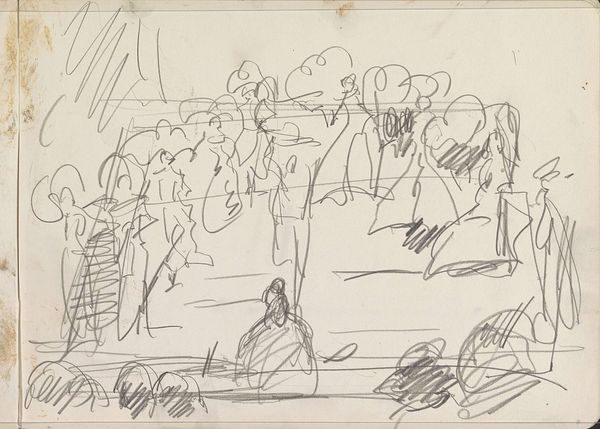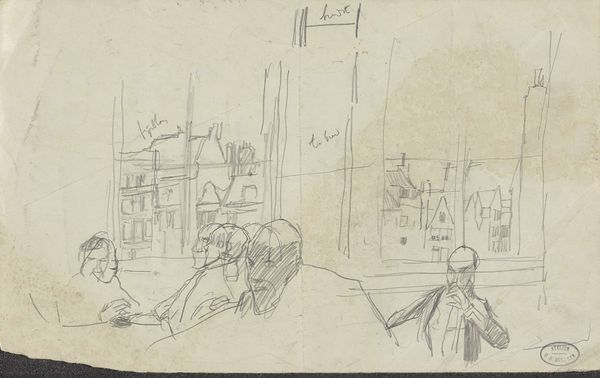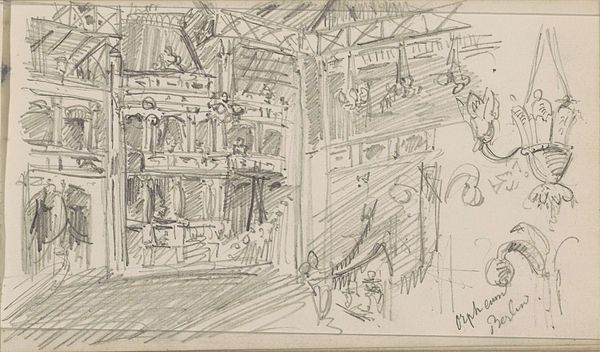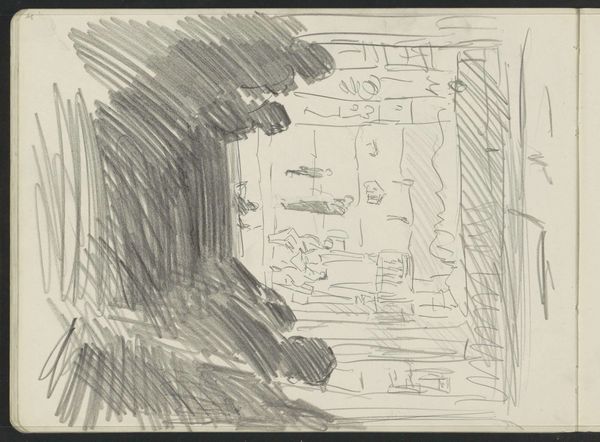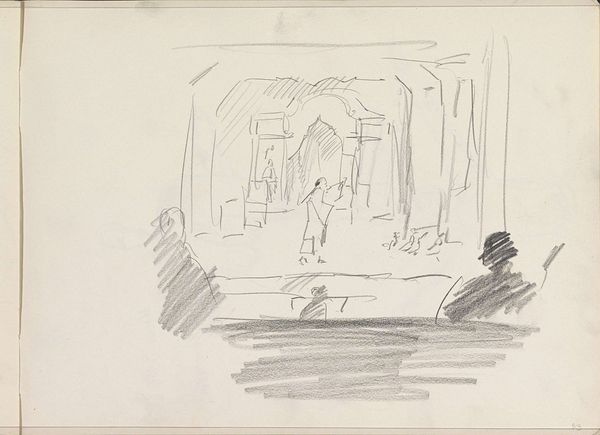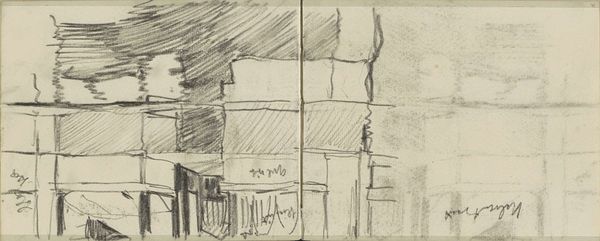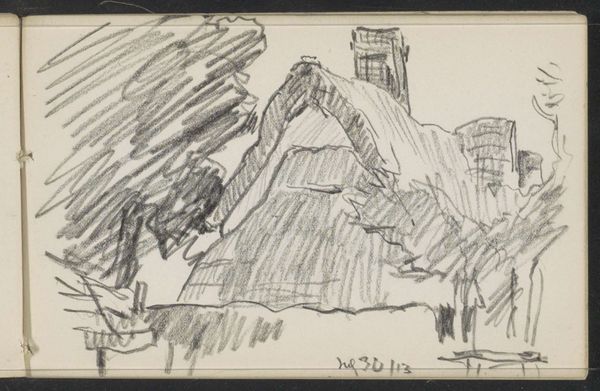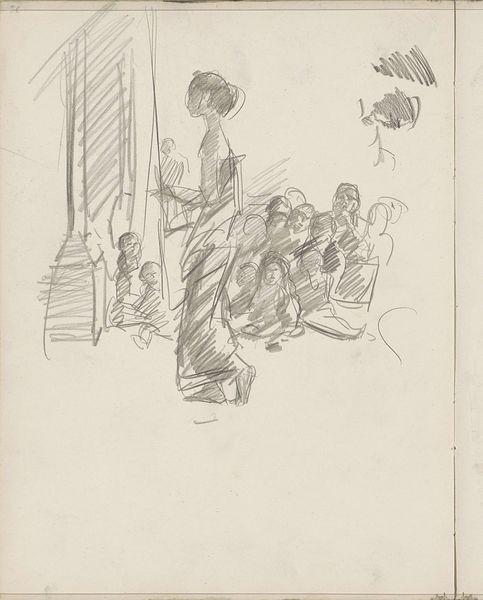
Copyright: Rijks Museum: Open Domain
Curator: Here at the Rijksmuseum we have a pencil and pen drawing titled "Theatervoorstelling," or "Theater Performance," by Isaac Israels, dating from approximately 1915 to 1925. What are your initial impressions? Editor: It strikes me as quite raw, almost ephemeral. The sketchiness emphasizes the transient nature of a performance, as if the scene might vanish at any moment. Curator: Yes, and it’s fascinating how Israels uses the pen and pencil to differentiate between the foreground and background. Notice the darker, denser strokes delineating the audience, in contrast to the lighter, almost ghostly lines representing the stage and set. Editor: I’m intrigued by what seems to be depicted on the stage. Figures gathered near water…perhaps a reference to classical mythology, a voyage, or a fateful departure? The ambiguity heightens the symbolic potential. Curator: Precisely. Israels captures a theatrical moment, but through its open-ended representation, he encourages the viewer to project their own interpretations onto the scene. Look closely at how the stage's architecture is defined with a simplified orthogonal design against the atmospheric background and a collection of figures with fluid outlines. This reinforces a spatial tension, further abstracting any immediate meaning. Editor: Also consider how he positions the audience – shadowed and collective – as witnesses, drawing a parallel between the act of watching and our own role as observers of the artwork. It becomes a meditation on spectatorship itself. The shared communal experience and how we reflect our inner experiences when seeing symbols on a stage. Curator: That's a perceptive observation. It demonstrates Israels’ capacity to layer visual structure with subtle layers of conceptual depth. This particular pen sketch represents a dynamic convergence of spatial arrangement and implicit content. Editor: Ultimately, this sketch speaks to the enduring allure of theatre, to how performances shape our cultural memory. Even in its unfinished form, this study contains a universal resonance about storytelling and cultural archetypes.
Comments
No comments
Be the first to comment and join the conversation on the ultimate creative platform.
